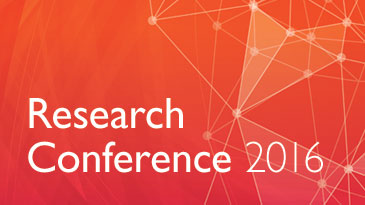
Location
Mezzanine M4
Start Date
8-8-2016 11:15 AM
End Date
8-8-2016 12:30 PM
Subjects
STEM education, Science teaching, Student engagement, Science interests, Freehand drawing, Models, Illustrations, Diagrams, Scientific concepts, Multimedia, Neuroscience, Primary education, Secondary education
Abstract
Scientists, mathematicians and engineers draw and model to create knowledge. This presentation will describe a guided inquiry approach to teaching and learning science that involves students actively creating visual and other representations to reason and explain as they explore the material world. The approach has been successfully used in a number of major professional learning initiatives in Victoria and NSW. Evidence will be presented of increased student engagement and quality learning flowing from the approach, which aligns classroom processes more authentically with processes of imaginative scientific discovery. Examples of activities and student drawings and model construction will be used to unpack the relationship between representation, reasoning and learning. Video evidence including that generated in the Science of Learning Research Centre (SLRC) classroom at the University of Melbourne, equipped with sophisticated video capture facilities, will be drawn on to explore ways in which drawing, gesture and talk are coordinated to imaginatively respond to material challenges. The presentation will explore the alignment of these sociocultural analyses to recent findings from neuroscience. Evidence will be presented that the creation of representations is central to quality learning across the STEM disciplines and for interdisciplinary STEM challenges.
Recommended Citation
Tytler, R. (2016, August 08). Drawing to learn in STEM [Paper presentation]. Research Conference 2016 - Improving STEM Learning : What will it take?. https://research.acer.edu.au/research_conference/RC2016/8august/10
Copyright Statement
Copyright Australian Council for Educational Research 2016
Place of Publication
Melbourne Vic
Publisher
Australian Council for Educational Research (ACER)
ISBN
9781742864075
Included in
Drawing to learn in STEM
Mezzanine M4
Scientists, mathematicians and engineers draw and model to create knowledge. This presentation will describe a guided inquiry approach to teaching and learning science that involves students actively creating visual and other representations to reason and explain as they explore the material world. The approach has been successfully used in a number of major professional learning initiatives in Victoria and NSW. Evidence will be presented of increased student engagement and quality learning flowing from the approach, which aligns classroom processes more authentically with processes of imaginative scientific discovery. Examples of activities and student drawings and model construction will be used to unpack the relationship between representation, reasoning and learning. Video evidence including that generated in the Science of Learning Research Centre (SLRC) classroom at the University of Melbourne, equipped with sophisticated video capture facilities, will be drawn on to explore ways in which drawing, gesture and talk are coordinated to imaginatively respond to material challenges. The presentation will explore the alignment of these sociocultural analyses to recent findings from neuroscience. Evidence will be presented that the creation of representations is central to quality learning across the STEM disciplines and for interdisciplinary STEM challenges.


Comments
Concurrent session Block 1